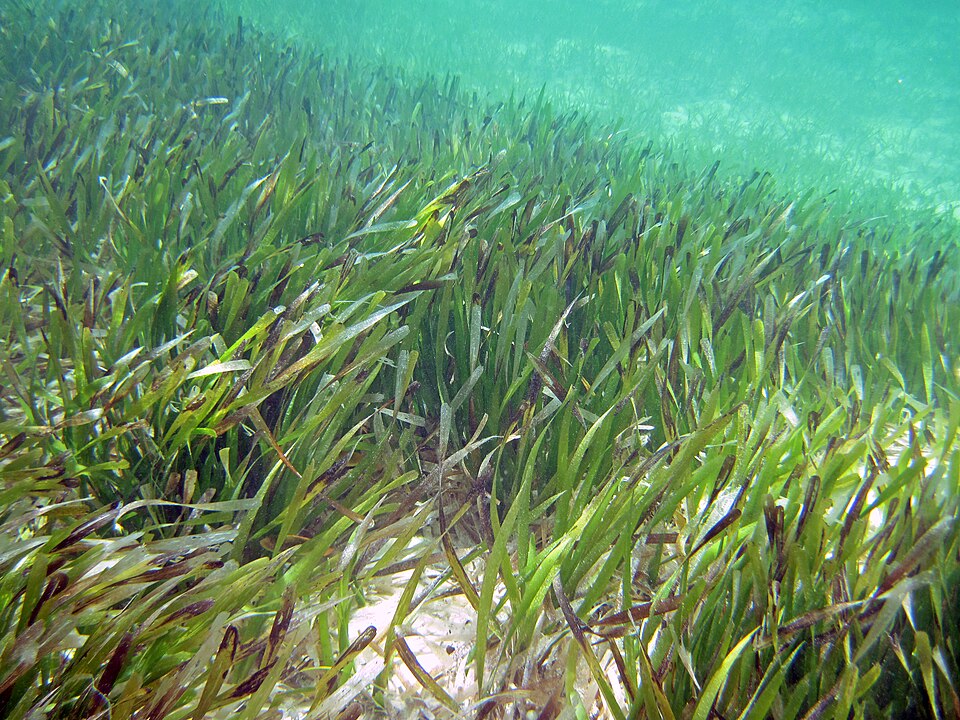
Thalassia testudinum
Overview
Thalassia testudinum, commonly known as turtle grass, is a species of seagrass found in the shallow waters of the Caribbean Sea, the Gulf of Mexico, and the western Atlantic Ocean. It plays a critical role in coastal marine ecosystems, forming extensive underwater meadows.
Identification
Turtle grass is characterized by its long, ribbon-like leaves, which can grow up to 30 cm in length and 1 cm in width. These leaves are bright green and form dense mats on sandy or muddy substrates, providing habitat and food for a wide range of marine life.
Habitat and Distribution
It thrives in shallow, calm, and clear coastal waters, typically between depths of 0.5 to 10 meters. Turtle grass beds are commonly found in bays, lagoons, and estuarine environments where light penetration is sufficient for photosynthesis.
Ecological Importance
Thalassia testudinum is a foundational species in tropical and subtropical marine ecosystems. Its meadows stabilize sediments, reduce coastal erosion, and improve water clarity by trapping particles. The plant also plays a significant role in nutrient cycling and provides habitat for juvenile fish, crustaceans, and invertebrates.
Role in Pollination
Unlike most flowering plants, turtle grass reproduces underwater through hydrophily—pollination by water. Male flowers release pollen into the water column, which then reaches female flowers. Recent studies have shown that marine animals like small crustaceans and polychaetes may also assist in pollination, making turtle grass one of the few known examples of animal-assisted pollination in marine environments.
Reproduction and Growth
Thalassia testudinum reproduces both sexually and asexually. Rhizomes spread horizontally under the sediment, giving rise to new shoots. Sexual reproduction occurs via flowers and seeds, although it is less common than vegetative growth. The plant grows slowly but forms long-lived, stable meadows.
Conservation
Turtle grass beds are vulnerable to threats such as coastal development, pollution, boat propeller damage, and climate change. Declines in water quality and increased turbidity can severely impact their health. Conservation efforts include habitat protection, seagrass mapping, and restoration projects.
